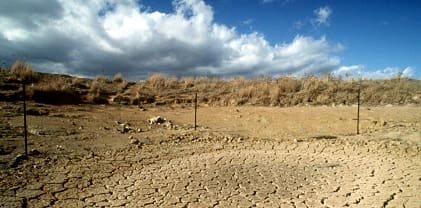PATCHY rains that fell in New South Wales in January and February had little impact on the widespread drought conditions across the state due to high temperatures and evaporation, according to the latest NSW Department of Primary Industries’ (DPI) State Seasonal Update.
DPI leader of climate applications and digital agriculture, Dr Anthony Clark, said while the west in particular was experiencing a prolonged drought event, a dry and warm February meant there had been little change in the overall situation for NSW.
“The breakdown of the current state of the drought event by the DPI Combined Drought Indicator (CDI) shows no change since the January State Seasonal Update, with 99.9 per cent of NSW experiencing drought conditions,” he said.
“Localised storm rainfall has been received in some areas, however this has had no agronomic benefit in most regions.
“There are parts of the central tablelands and coastal NSW that are in drought recovery, but the rate of recovery has slowed over February and further rain is now needed to continue a positive trend.”
The proportion of the state classified as being in Intense Drought (31.7pc) remains similar to January, however the distribution of those areas has shifted with some regions receiving localised intense rainfall events causing a lift in the Rainfall Index.
“While some rainfall was recorded at meteorological stations there has been no change in agronomic and hydrological conditions and these remain at critically low levels,” Dr Clark said.
“The generally dry conditions in February have also continued the pressure on surface water supplies across the state, with farmers and communities, particularly in the western areas, continuing to manage surface water shortages in addition to low primary productivity.
“Recent climate forecasts from the Bureau of Meteorology indicate a low probability of achieving median rainfall across NSW for the March to May period, which is a decline in probability since the January update.
“However, climate forecasting has low levels of accuracy at this time of the year, so this should be interpreted by farmers with caution.”
Source: NSW DPI
Full report: https://www.dpi.nsw.gov.au/climate-and-emergencies/droughthub/information-and-resources/seasonal-conditions


HAVE YOUR SAY